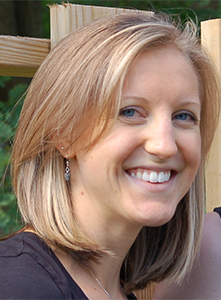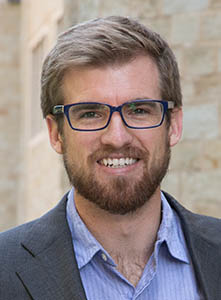Summer Lessons in Sustainability
At a panel discussion on September 15, Yale School of Management and Yale School of Forestry & Environmental Studies (FES) joint-degree students shared some of the lessons they gleaned during internships this past summer.
Because they’re enrolled in a three-year program, joint-degree students from the SOM and FES have the opportunity to take part in two summer internships, allowing them to sample a broader variety of firms and roles.
The three student panelists worked at very different organizations and were able to observe varying aspects of the growing role that sustainability plays in corporate enterprises today—and its challenges.
Some of their takeaways:
It was pretty neat to be part of a company that was so advanced in integrating ESG into its entire investment process.
 All of Breckinridge’s investments are assessed on their relevant ESG (environmental, social, governance factors) risks, and my job was to engage with these funds’ CSR teams and their investor relations teams and inform them as to what ESG meant to us… It was pretty neat to be part of a company that was so advanced in integrating ESG into its entire investment process. Breckinridge is one of the first companies to do this robustly, and they’re still working on it. For me, it was a great opportunity to help them make that integration possible, to refine areas that they’re investing in and the ways they’re using sustainability scores as part of the credit research process.
All of Breckinridge’s investments are assessed on their relevant ESG (environmental, social, governance factors) risks, and my job was to engage with these funds’ CSR teams and their investor relations teams and inform them as to what ESG meant to us… It was pretty neat to be part of a company that was so advanced in integrating ESG into its entire investment process. Breckinridge is one of the first companies to do this robustly, and they’re still working on it. For me, it was a great opportunity to help them make that integration possible, to refine areas that they’re investing in and the ways they’re using sustainability scores as part of the credit research process.
—Sarah Bolthrunis ’16, FES ’16
Internship: Breckinridge Capital Advisors
I spent most of my summer working on what’s called cradle-to-cradle design of environmental products.
 You’re trying to avoid permanently bonding wood-based products to oil-based products like plastic. It then becomes easier to turn these materials into new products once the original product is no longer useful. Herman Miller is one of the most forward-thinking companies on this. So, I also spent a lot of time thinking about the chemical composition of each product material to understand the risk it posed to humans and the environment. I was challenged to explain these environmental and human risks to product design engineers. Whilst I was incentivized to suggest environmentally preferable materials, the engineering team was incentivized to find marketable and durable product within their budget. The company’s leadership, however, has placed sustainability at the forefront, so it’s become an institutional priority.
You’re trying to avoid permanently bonding wood-based products to oil-based products like plastic. It then becomes easier to turn these materials into new products once the original product is no longer useful. Herman Miller is one of the most forward-thinking companies on this. So, I also spent a lot of time thinking about the chemical composition of each product material to understand the risk it posed to humans and the environment. I was challenged to explain these environmental and human risks to product design engineers. Whilst I was incentivized to suggest environmentally preferable materials, the engineering team was incentivized to find marketable and durable product within their budget. The company’s leadership, however, has placed sustainability at the forefront, so it’s become an institutional priority.
—Oscar Benjamin ’17, FES ’16
Internship: Herman Miller
It was really inspiring to work with a company where everybody was so excited to be there and where everybody was genuinely into sustainability.
 New Belgium also happens to make an awesome product—which is important because without an awesome product, your business is not sustainable in itself. It was challenging in that most of my work was doing external stakeholder reviews, so I didn’t get as much exposure to internal operations as I would have liked. But at the same time, they have such an inclusive company culture and so many events going on all the time, that I really did feel a part of the place, even within the short, 10-week internship.
New Belgium also happens to make an awesome product—which is important because without an awesome product, your business is not sustainable in itself. It was challenging in that most of my work was doing external stakeholder reviews, so I didn’t get as much exposure to internal operations as I would have liked. But at the same time, they have such an inclusive company culture and so many events going on all the time, that I really did feel a part of the place, even within the short, 10-week internship.
—Logan McCoy, ’16, FES ’16
Internship: New Belgium Brewing
